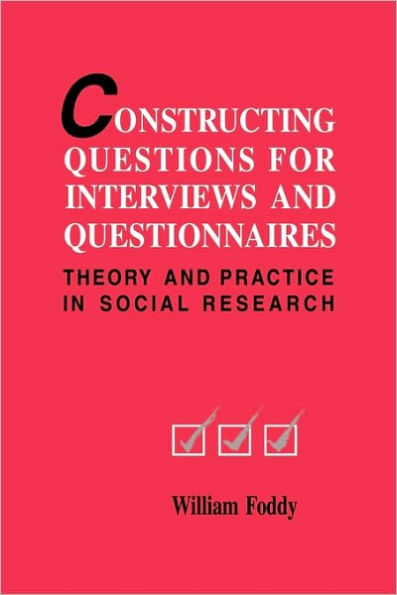5
1
9780521467339


$43.99

Constructing Questions for Interviews and Questionnaires: Theory and Practice in Social Research / Edition 1 available in Paperback

Constructing Questions for Interviews and Questionnaires: Theory and Practice in Social Research / Edition 1
- ISBN-10:
- 0521467330
- ISBN-13:
- 9780521467339
- Pub. Date:
- 06/24/1994
- Publisher:
- Cambridge University Press
- ISBN-10:
- 0521467330
- ISBN-13:
- 9780521467339
- Pub. Date:
- 06/24/1994
- Publisher:
- Cambridge University Press

Constructing Questions for Interviews and Questionnaires: Theory and Practice in Social Research / Edition 1
Paperback
43.99
In Stock

Product Details
| ISBN-13: | 9780521467339 |
|---|---|
| Publisher: | Cambridge University Press |
| Publication date: | 06/24/1994 |
| Edition description: | Reprint |
| Pages: | 244 |
| Product dimensions: | 5.98(w) x 9.02(h) x 0.55(d) |
From the B&N Reads Blog
